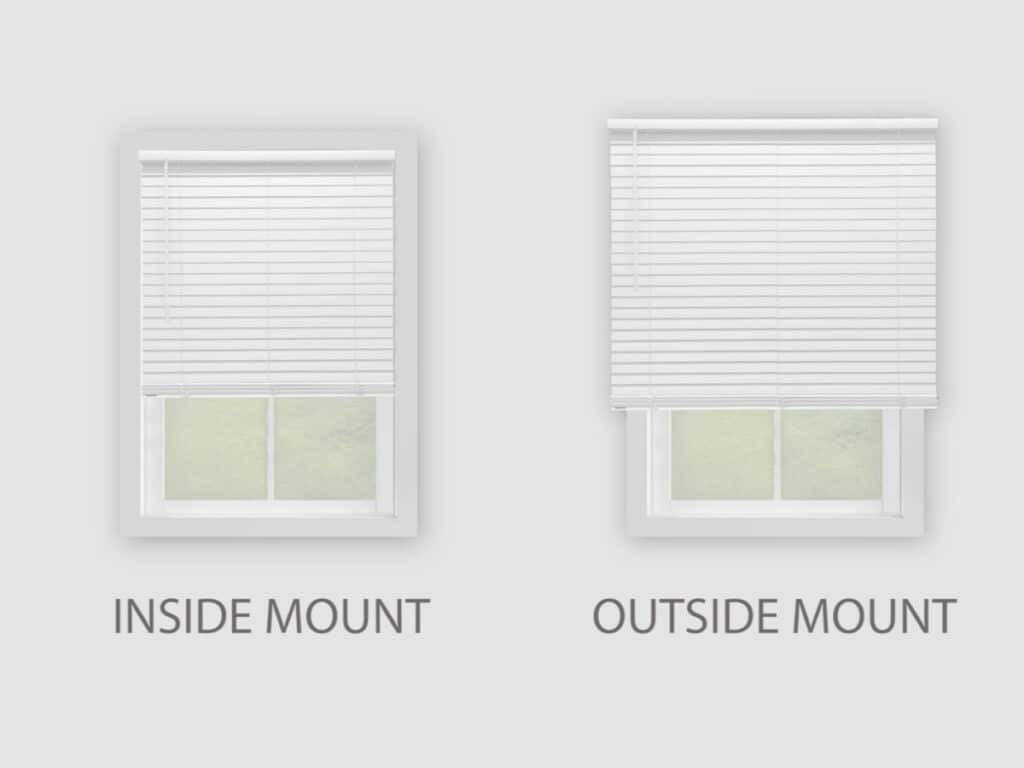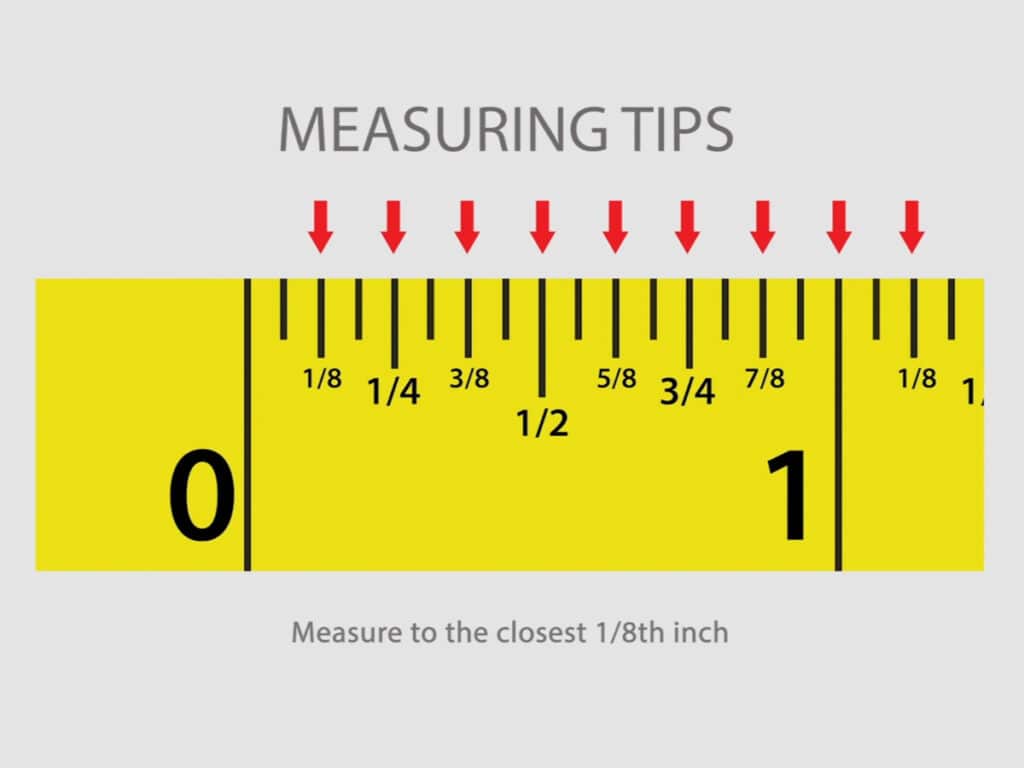Ordering new window treatments is exciting. Measuring your windows correctly to get the right size is considerably less so.
Fortunately, our Norman® retail partners will come to you to measure your windows for any style of window treatment, whether it be minimalist or contemporary! In those rare occasions that you’ll need to measure your windows, here’s our guide on how to measure for blinds, shades, shutters, and more.
How to Measure for Window Treatments Yourself
When it comes to choosing the right window treatments for your home, getting the correct measurements is crucial. Otherwise, you risk ending up with treatments that are either too small or too large for your windows. Measuring for blinds or other window treatments is relatively easy and only requires a few simple tools. First, you’ll need a steel tape measure in order to obtain the width and height of your window. Second, you’ll need a level in order to ensure that your treatment will hang straight. Finally, you may also want to use a pencil or a piece of chalk in order to mark some of your measurements. With these simple tools, you’ll be well on your way to choosing the perfect blinds or window treatments for your home.

Inside Mount vs. Outside Mount Blinds & Window Treatments
When measuring for window treatments, it’s important to know whether you need an inside mount or an outside mount. An inside mount means the treatment will be mounted on the inside of the window frame, while an outside mount means it will be mounted on the wall above the window. The type of mount you need will depend on the squareness of your window opening, the depth of your window, and the type of window treatment you want. For example, if you have a shallow window frame, you may need an outside mount to ensure that the treatment doesn’t interfere with the opening and closing of the window. Conversely, if you want a treatment that hangs down from the top of the window opening, you’ll need an inside mount.

Measuring for Horizontal or Vertical Blinds
Measuring for horizontal or vertical blinds is a relatively simple process, but it’s important to take accurate measurements in order to ensure a perfect fit. Always make sure to round your measurements to the nearest ⅛”.

Inside-Mounted Blinds
Measuring for inside-mounted blinds is a three step process. First, measure the width of the window at three different points: at the top, in the middle, and at the bottom; use the shortest of these measurements. Second, measure the height of the window from top to bottom at three different points; use the longest of these measurements for horizontal blinds and the shortest for vertical blinds. Installing inside-mounted blinds is a simple way to add style and functionality to your home.

Outside-Mounted Blinds
For outside-mounted blinds, you will need to measure the width of the window. To do this, simply measure the distance between the left and right edges of the window frame. Next, you will need to measure the height of the window. To do this, measure from the top of the window frame to the windowsill. Be sure to add 4 inches to your width and length measurements to allow for more privacy and light blockage. Installing blinds outside of the window opening makes your window appear to be wider and longer, while also providing better privacy and light control.

Vertical Blinds Stack Control Options
When measuring for vertical blinds, you will need to choose a stack control option that allows all of the blinds to stack on top of each other. This is usually determined by the orientation of your sliding door- whether it slides from left to right or from right to left. For example, if your sliding door slides from left to right, you would want to choose Right Stack and vice versa. If room darkening is critical for that room, choose S-shape vanes for enhanced room darkening. Measuring for vertical blinds is a simple process that only takes a few minutes. By taking the time to get an accurate measurement, you can be sure that your new blinds will look great and function properly.
Measuring for Roller Shades
Roller shades are an increasingly popular choice for window treatments. They’re easy to operate, easy to clean, and are able to seemingly disappear from the window, giving you more views to the outside. Here’s how to measure for both inside-mounted and outside-mounted roller shades, plus info on how to mount above or directly on existing molding.
Inside-Mounted Roller Shades
Measuring for roller shades may seem like a daunting task, but it’s actually quite simple. When measuring for inside-mounted roller shades, all you need is a steel tape measure and a few minutes of your time. First, measure the depth of the window from the opening to the glass. You’ll need this measurement to ensure your window depth meets the minimum depth requirement for an inside mount. Then, measure the width of the opening at the top of the window. Next, measure the height of the opening from top to bottom in three different places: left, center, and right. Use the tallest measurement of these three. Once you have all of your measurements, it’s time to order your custom roller shade!
Outside-Mounted Roller Shades
Before making any measurements, make sure you’ll have enough flat surface for the mounting hardware. Next, determine the width of the roller shades you want to order. The fabric will be narrower than the ordered width so determine how wide you would like the fabric/material to be and then add 3 inches to determine the bracket-to-bracket width. Then, measure the height of the window, from the top of the frame to the sill. Add 3 inches to the height measurements to account for possible window sill and overhang to ensure privacy.
Mounting on the Wall Above an Existing Molding
Looking to mount roller shades on the wall above existing molding? Begin by measuring the width of the window, from one end of the molding to the other. Then, measure the height of the window, from the top of the molding to the bottom. Once you have these measurements, you can order roller shades that will fit perfectly.
Roller Shades Light Gaps
If you’re looking for a roller shade that will provide complete privacy, aside from choosing a room darkening fabric, it’s important to mind the presence of light gaps. There are several ways to reduce light gaps inherent to roller shades. For outside mounts, add at least 3 inches on both the width and height of your window measurements. Alternatively, you can opt for solutions created to address light gaps. LightGuard 360™, Norman®’s innovative blackout solution, can significantly block out more light and ensures privacy on the sides and top of window openings. By following these simple steps, you can be sure that your roller shade will provide complete room darkening and privacy.

Measuring for Wood Composite & Real Wood Shutters
Whether it’s wood composite or real wood, the process for measuring shutter openings is the same. That said, you’ll need to measure slightly differently depending on whether you’re opting for inside-mounted shutters or outside-mounted shutters (with or without existing trim.)
Inside-Mounted Shutters
When measuring your windows for inside-mounted shutters, start by checking the squareness of the window opening. First, measure the diagonal points of the window. If the window is out of square by more than 1/4 to ½ inch, an outside mount application is recommended. An inside mount application will only work when your window is square. Next, measure the width of your window opening. Record the width at the top, middle, and bottom of your window opening. Use the narrowest measurement of the three for the width. Then, measure the height of your window opening in three places: left, center, and right. Use the shortest measurement for your window’s height. Measure the depth of your window opening. You’ll need this measurement to ensure your window recess meets the minimum depth requirement for an inside mount. You need enough window depth for shutter louvers to properly rotate. If you don’t have enough window depth, you’ll want to choose an outside mount instead.
Outside-Mounted Shutters — Window with Existing Trim
Outside-mounted plantation shutters are mounted on the window molding or wall around your window. Outside-mounted shutters are a good choice if an inside mount is not possible due to insufficient window depth or obstructions within your window, such as a handle, crank, etc.
To ensure your outside-mounted shutters will fit perfectly with existing trim, check the window for squareness by measuring the diagonal points of the window. Next, measure the depth of your window opening. This is the distance from the window glass to the front of the window opening. You’ll need this measurement to ensure your window recess meets the minimum depth requirement for all louver sizes. Measure the width of the window opening. Record the width at the top, middle, and bottom of your window opening. Use the widest measurement of the three – this is your window opening’s width. Measure the height of your window opening in three places: left, center, and right. Use the longest measurement – this is your window opening’s height. Next, measure the flat surface of the trim. Your shutter will be mounted on the trim. Most shutter frames require at least 1 ½” of flat surface to be installed properly. For plantation shutters, there are frames designed specifically for inside mount vs outside mount. Consider how you will mount the shutter when choosing the frame.
Outside-Mounted Shutters — Window with No Trim
Measuring for outside-mounted shutters without existing trim is less complicated than measuring for outside-mounted shutters with trim. Follow all the steps described in the previous section above for measuring outside-mounted shutters with trim. The only difference is that you do not need to add any additional inches to your window opening measurements.
Measuring Valances
Last but not least, valances are a decorative piece that are also relatively easy to measure for and install. There are several ways for you to mount them.
Flush
When measuring for flush valances, you will need to take several factors into account, including the width of the window and the depth of the window opening. The first step is to measure the width of the window from one side to the other. Next, measure the depth of the window from the front of the opening to the window glass.
Partial Recess or Semi-Inside Mount
If you do not have enough window depth, consider having your window treatments partially recessed. Measuring for partial recess valances is relatively easy. The first step is to measure the width of the window from one side to the other. Add an extra 2-3 inches to this measurement for a more decorative and finished look.
Conclusion
Need help measuring for specific window treatments before ordering? All of Norman custom window treatments are sold with measure and installation included, so you’ll never have to worry about tedious measuring yourself. However, you can still speak to a Norman® expert and we’ll be happy to help find the right window treatment for you. Ready to order your brand-new window treatments? Head over to the dealer locator. Norman® offers the widest selection of styles, types, and colors to give your home a custom, personalized look.
